AMPed Up, Up, Up…
American Mural Project, Winchester
September 2024
Connecticut museum visit #524. Also, this is billed as the “largest indoor collaborative artwork in the world.”
I love big, ambitious projects. Heck, you’re reading a very big ambitious project right now. Look at that first italicized bit just above this sentence. 524?! Big. Ambitious.
And ridiculous.
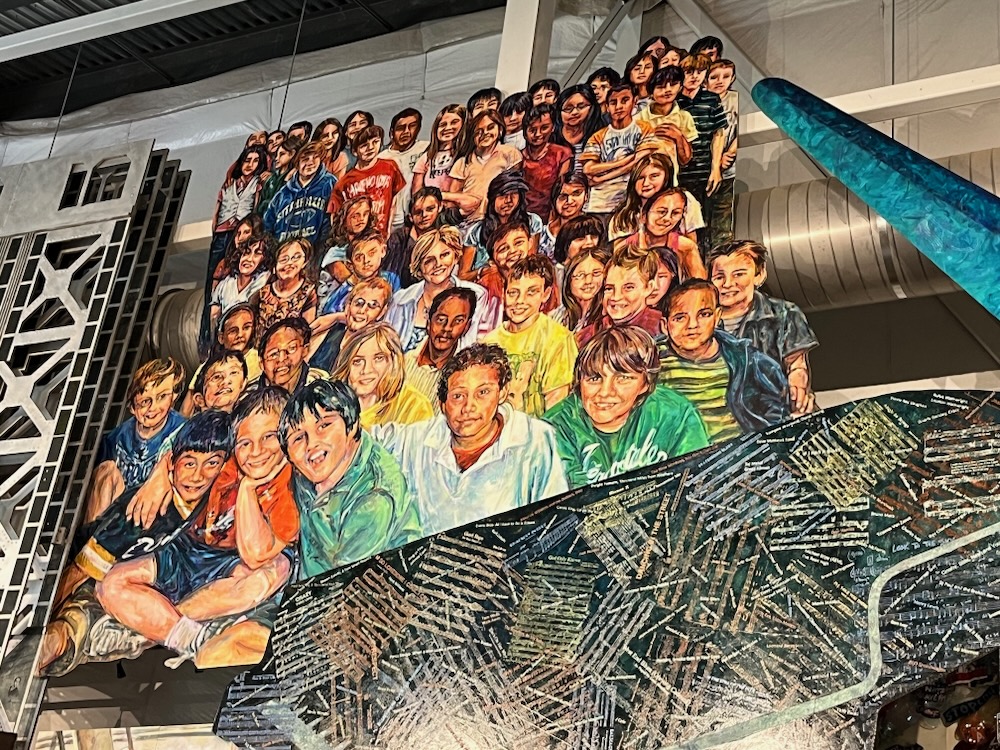
Am I calling The American Mural Project, housed in an old hosiery factory in downtown Winsted ridiculous? No, not necessarily, but there are some ridiculous aspects to it. I’ll get to them soon enough.
Like this website, AMP is a multi-decade project with a distinct beginning, but no real ending. Also, it’s much bigger than it appears to most. The campus here includes three acres, two historic mill buildings, and a small house. In 2018, the main building’s roof was raised 30 feet to accommodate the famous mural.
Oh, but there’s more. A five-foot-wide by 120-foot-long gallery in the back of the mural will display the artwork of kids who’ve collaborated nationwide. It is set to be open in 2025. Later, a second mill building in the rear is slated to be renovated into a Visitor and Education Center.
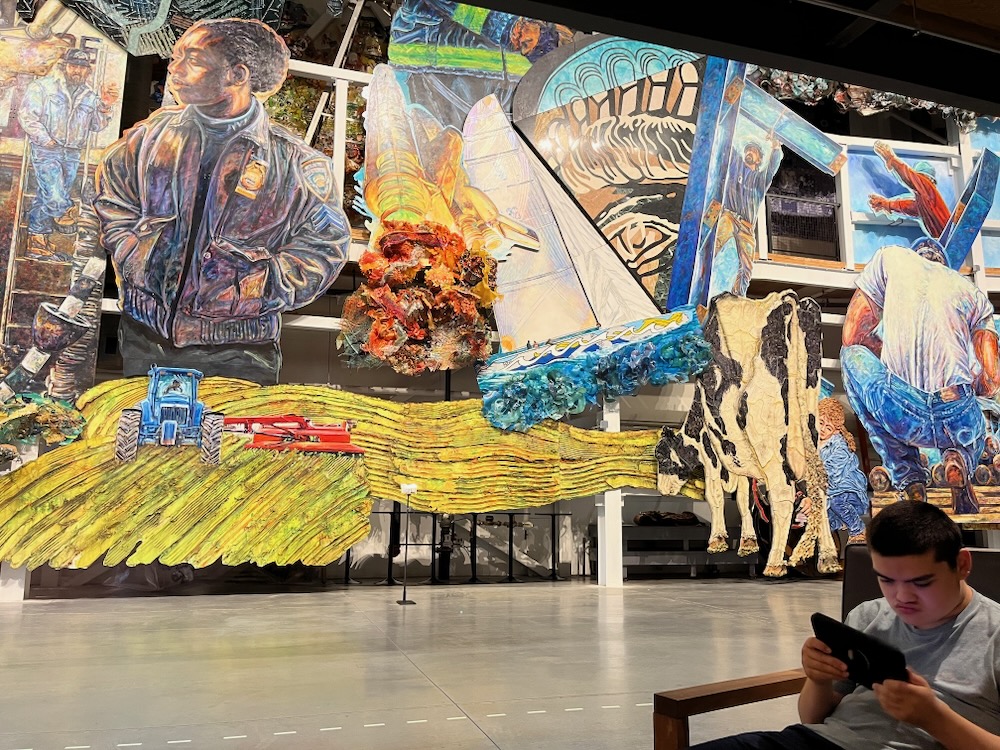
I get asked all the time, “what is CTMQ?” So I’ll assume the creator here is asked, “what is AMP?” Founded in 2001, AMP is a nonprofit organization focused on honoring work by giving dignity to the American worker and initiative to kids. Oooookaaay. That sounds important. But really, what is AMP?
The American Mural Project is “the largest indoor collaborative artwork in the world; a three-dimensional mural 120-feet long and five stories high. Nothing like it exists in the world.”
Wow, that sounds really important. The “largest in the world” claim is tossed around a lot wherever AMP is concerned. I have no idea if its true, or how they’d verify its veracity. It is big. Really big, but you know what? I don’t think it’s “five stories tall” as is always written. A “story” isn’t an exact measurement of course, but its generally about 14 feet.
I do not believe this thing is 70 feet tall.
In fact, this is from an article that was clearly more of a press release:
It’s hard to visualize the mammoth 120-foot long by five-story mural so let’s compare it to something you know. Imagine three average-size coach buses parked front to back in a line. That’s equivalent to the mural’s length. Then imagine each of the three buses stacked four high. That’s equivalent to its height.
An Greyhound bus is 11-feet tall. I do believe it’s about 55-feet tall, which is not the five stories always referenced. (For what it’s worth the New York Times wrote that is’s 48-feet tall.)
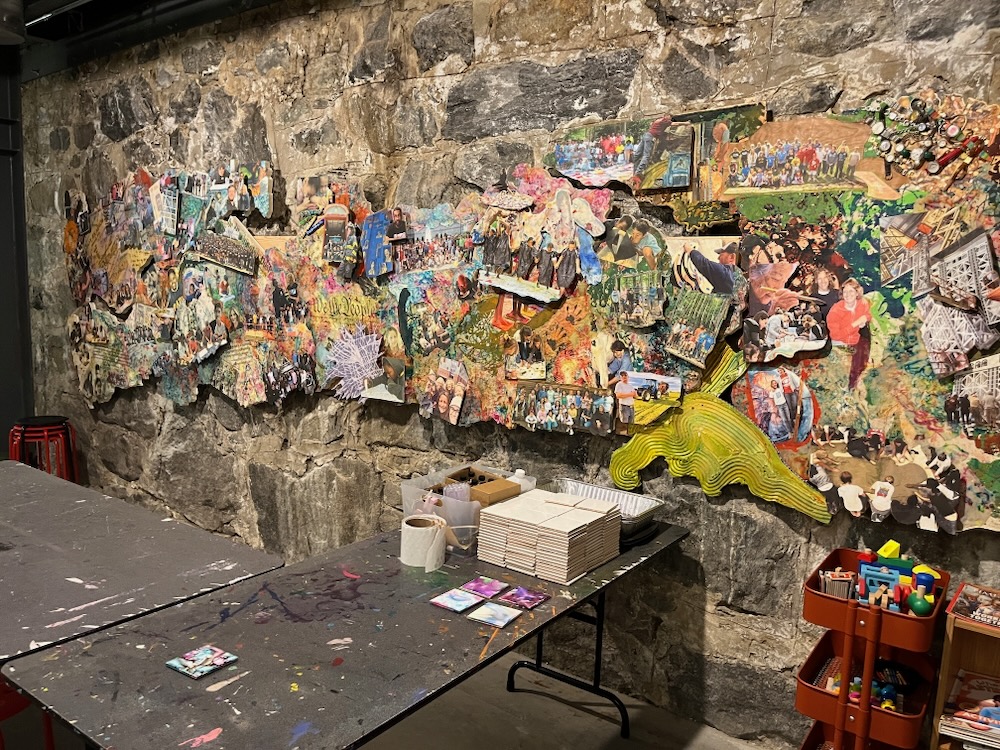
Regardless of how tall it is, that doesn’t matter. It’s very tall. But getting back to what it is…
Artist Ellen Griesedieck first conceived of the mural in 1999, when she felt inspired by the scale of Boeing’s 747 fabrication plant, which she had visited in preparation for her latest in a series of commissioned paintings of working Americans. While creating the study of the mural, she began to see the project as an opportunity to inspire and challenge others, especially children—not only by depicting this work in the mural, but by involving them in the mural’s creation.
A tribute to American workers, the mural is a visual history of the country over the past century through its workers—from heart surgeons to steel workers, athletes to farmers, assembly workers to the fabricators of a 747. Through partnerships with schools, other nonprofits, and professionals in a wide spectrum of fields—including NASA, Boeing, Habitat for Humanity, and HealthCorps — AMP has engaged more than 15,000 students and adults across the country in the creation of the mural through diverse art projects.
Okay, that’s cool. CTMQ has engaged exactly zero students and adults to aid in its creation. And now we see why AMP is what it is.
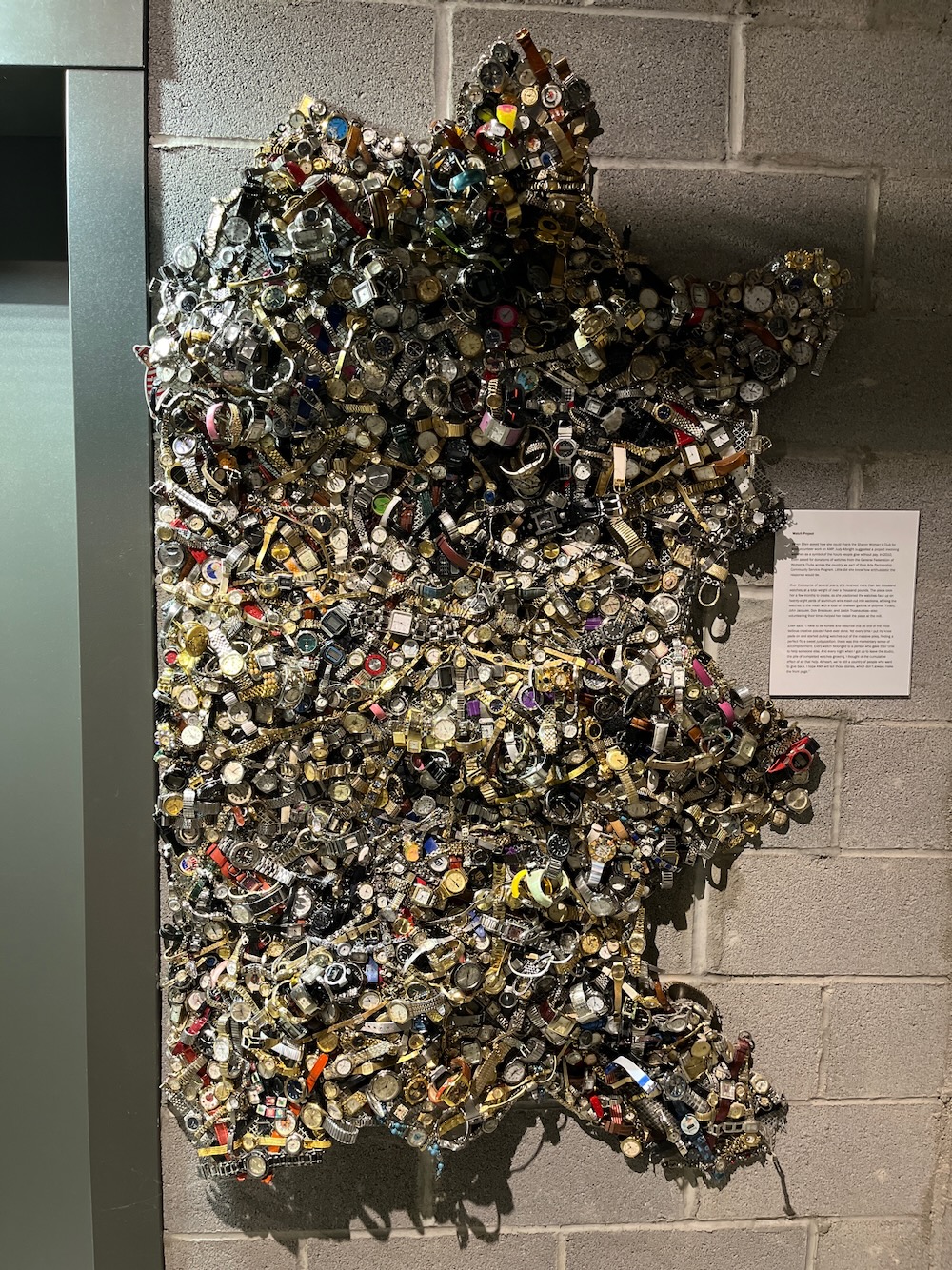
Artist Griesedieck has always liked BIG. She was enamored by the famous Watts Towers in Los Angeles and of course the Boeing work set her mind in motion. The towers used trinkets (and trash) given to the artist by neighborhood kids. She knew she would involve children in her art; 250 students from eight schools in CT, MA, and NY collaborated on the first state project. The finished mural will include one project involving kids in each state. More than 15,000 kids have worked on the mural to date.
AMP has received a ton of glowing local press. Whoever is behind their media push is fantastic at their job. I’ve seen and read so many articles and social media pushes for this place over the last several years. (Another area this website you’re reading fails miserably at… but this website is free. AMP is decidedly not.)
I drove out west to Winsted with Damian and found the place just off the main road through the town. We were the only visitors, but were told that there are usually many more people here. I paid $12 for me and $5 for Damian who is still technically a student – and who would barely even look at the massive mural in front of his face.
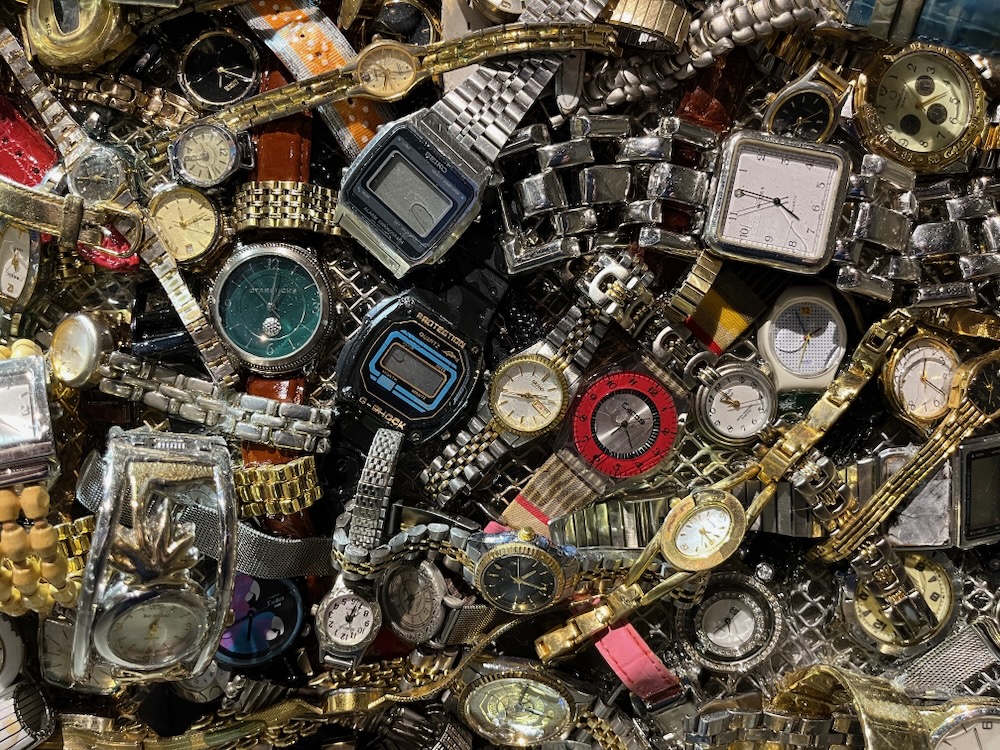
So yeah, if I came with my wife and both sons, this would be a $34 dollar outing. Hey, art isn’t free.
Two staffers excitedly welcomed us and offered all sorts of sign-ups and told us about future event$ and future plan$ and tour$ and whatnot. The mural also has a cool automated “tour” which you can listen to via a little speaker thing you carry around.
It’s a mural. Have I mentioned that it’s big? It’s big.
There is a lot of explanatory text throughout the building. In short, it is a visual narrative of Americans at work, real men and women that Griesedieck has documented in her travels across the country.
“When you start, you don’t think you are going to create this towering thing,” said Griesedieck, who first conceived of the mural in 1998. She wanted to celebrate the workers whose efforts have created the society we all enjoy. “We never think of the benefits that come to us because of these guys, how we benefit from the work of others,” she said. “I admire every one of them and see the beauty of what they are doing.”
Wait. Griesedieck is married to Sam Posey? Huh. Cool.
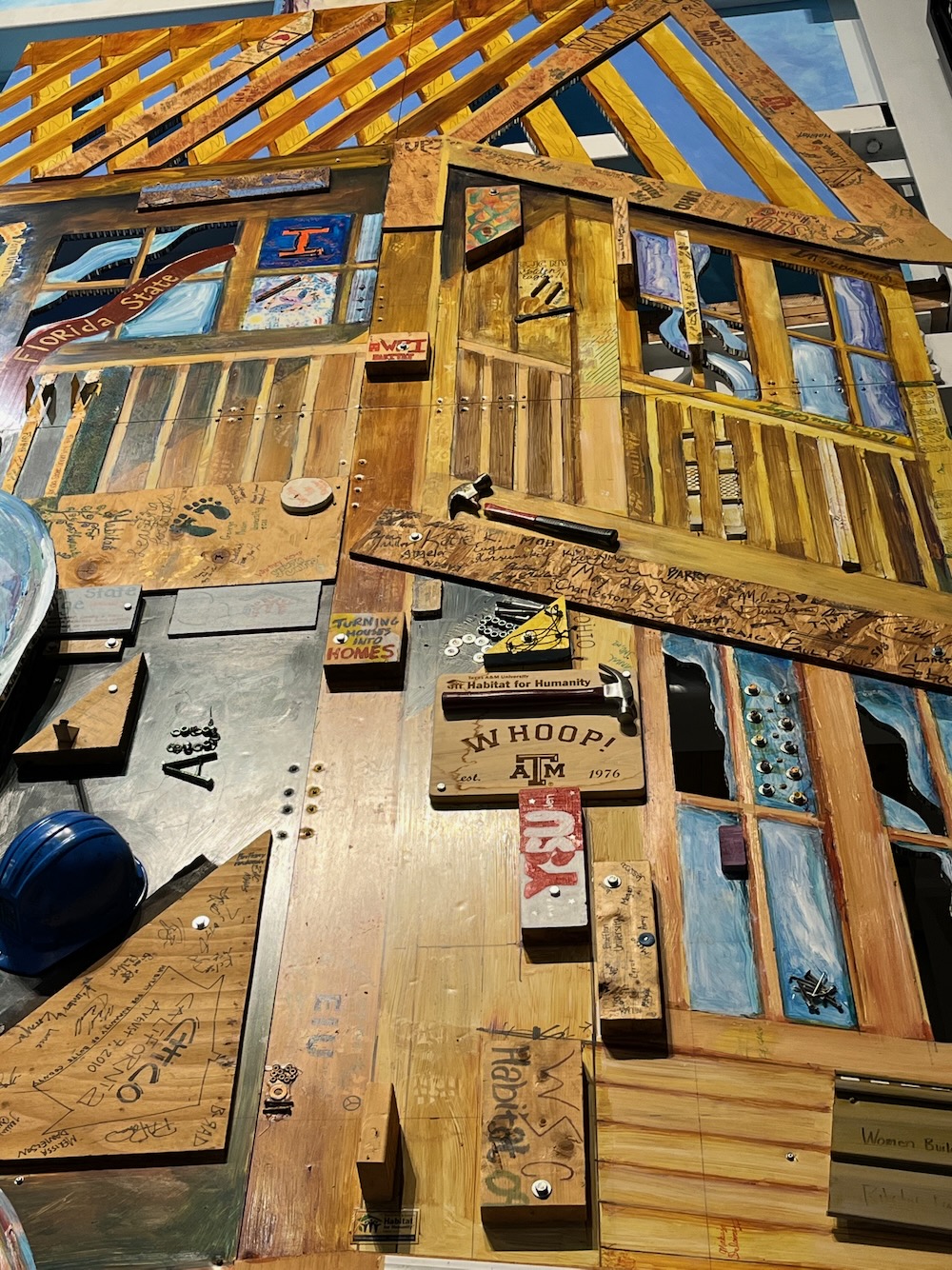
(Posey is one of the most important figures in American race car driving and is also a painter, writer, and designer.)
This story is becoming more fascinating to me as I write it than when I visited the place. Her husband designed the space. I mentioned it was an abandoned hosiery factory, but that factory supposedly made socks for the Yankees and Red Sox. It was contaminated, was cleaned up using brownfields cleanup money.
Her project has been supported by Paul Newman, a family friend – through the car racing and Limerock connection with her husband. Griesedieck drew the original illustrations for the labels on Newman’s Own salad dressings. Now I love this story!
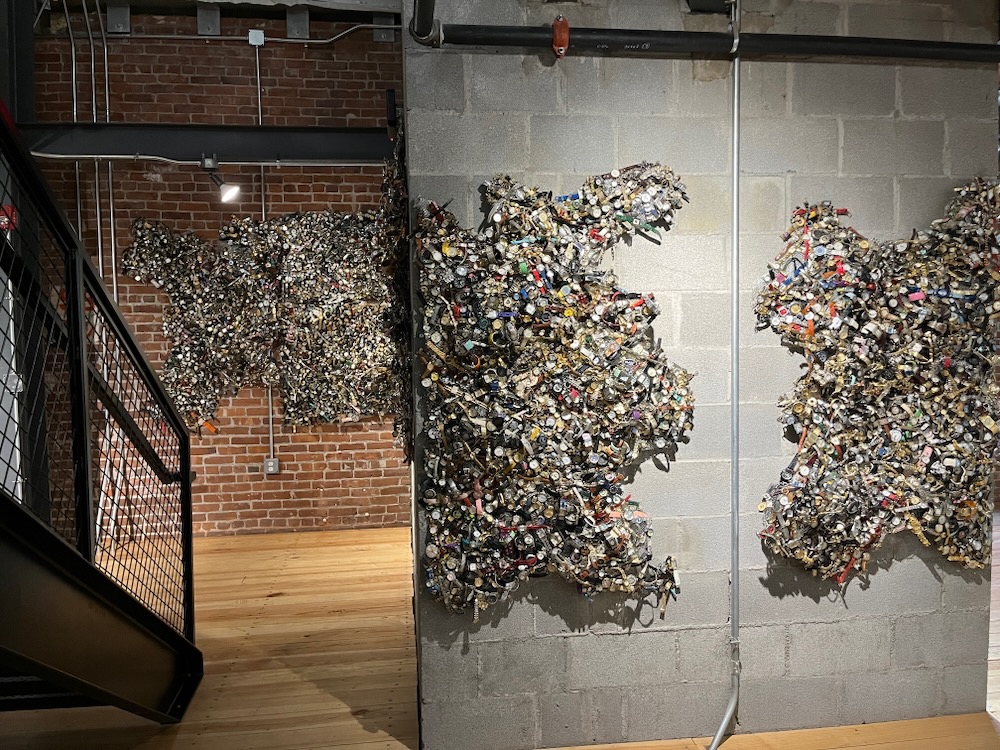
Griesedieck and Posey live next to Jasper Johns in Sharon!
Okay, okay, back to this mural thing. In short, it is a work of art about the art of work — the people depicted are welding, wiring, milking, lifting, sledge-hammering and more. And as noted, it’s 3-D… though not as 3-D as I was hoping for.
But it’s amazing how kid crowd sourced this thing is:
To make a blown-glass section representing fire, two classes of West Virginia fifth-graders blew glass at the Blenko Glass Company. To create a giant axe, 40 children in Ashland, Wis., worked with recycled submerged wood from Lake Superior. A group of children in New Mexico made the ceramic tiles that will form the pattern in a worker’s red plaid shirt.
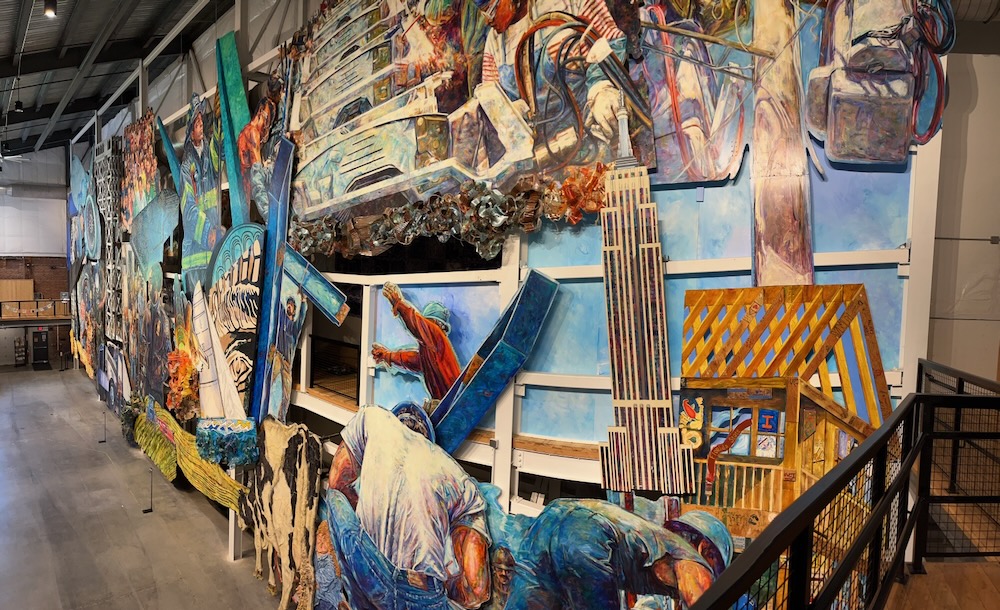
More from the New York Times:
Griesedieck painted the heroic central figures—some of which stretch to an impressive 18 feet—in her Sharon studio before transporting them to a converted mill in Winsted. The mural features a vivid compilation of three-dimensional sculptural vignettes portraying Americans at work, including heart surgeons, steelworkers, firefighters, farmers and school teachers. It was constructed with unconventional materials including honeycomb aluminum panels, blown glass, clay, reclaimed wood, native indigo—even spackle that she manipulated with a rake to create a field of mown hay.
She leveraged friendships of people with unique specialties to transport the large pieces from her Sharon studio to the building in Winsted. After all, some of the parts weigh tons and needed to be mounted on a vertical wall. The engineering behind this behemoth is arguably more impressive than the scale or the artistic value. (There are valid reasons why it took two decades to complete.)

And again, what I saw in that one giant room is only the first part of the whole project. A whole other building is to be modernized and a connecting tunnel to be built. In all, this place will need to raise multi-millions of dollars more in donations, grants, and, well, entrance fees.
It is a cool thing. The fact that I was able to walk up three flights of stairs to view the mural at different levels is unique and impressive. There’s an entirely different installation here as well – one that incorporates thousands of used watches. That’s it. Watches. They’re all over the non-mural walls, and I liked them.
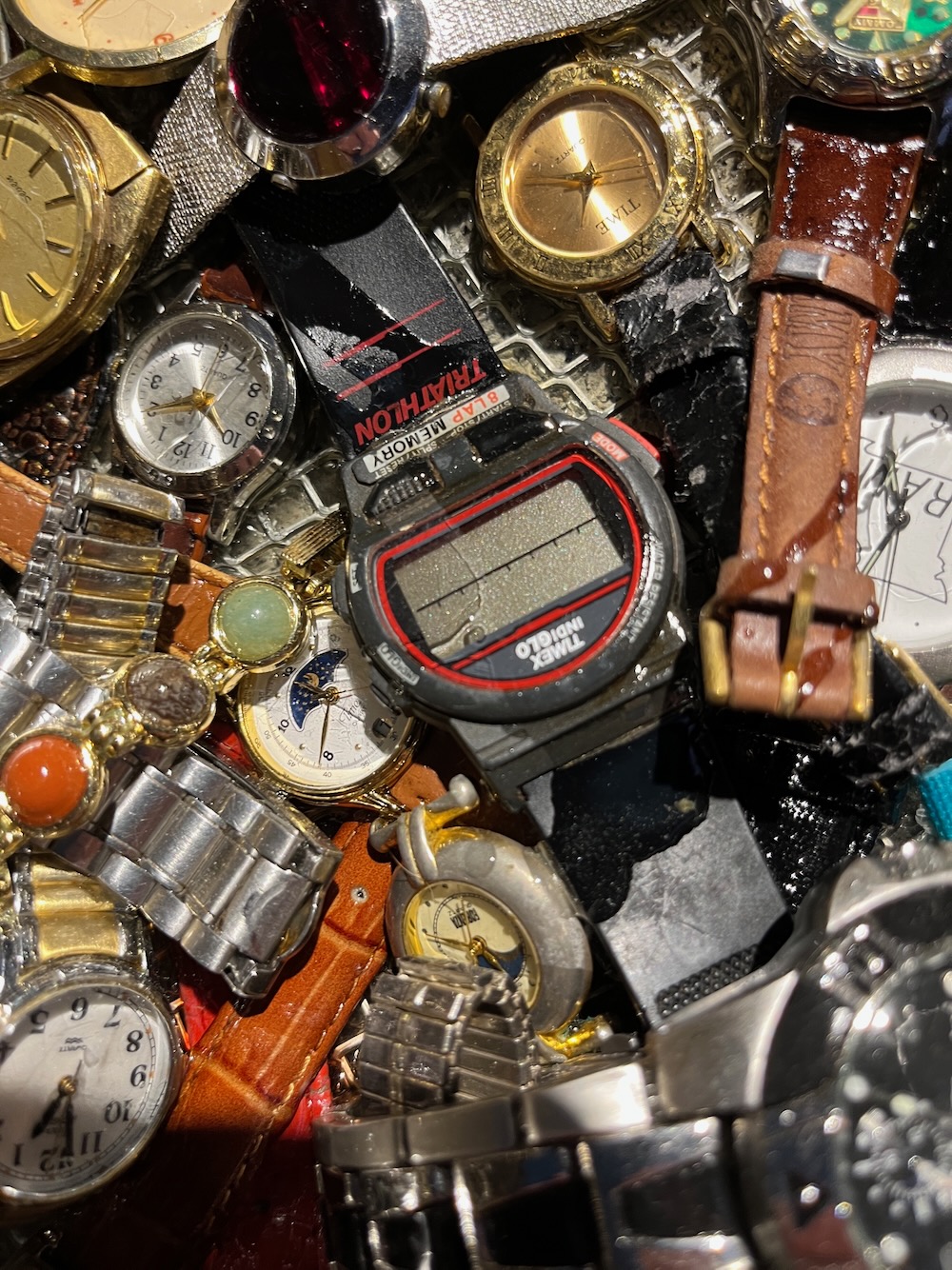
There’s a whole artist’s statement about the watch installation, but you can go there and read it yourself.
After all, you’re coming here for the massive mural. Depicting “real American workers” that Griesedieck met and photographed over the years. Part painting, part sculpture with some portions six to eight feet deep. Marble, glass, clay, wood… stuff from all 50 states.
Visitors will find a little children’s play area and scavenger hunts and I-Spy games (that they call I-See as apparently fellow Connecticutian Walter Wick protects his I-Spy copyright), complimentary coffee or tea, and hidden away on the third floor, a Little Free Library. A very well stocked Little Free Library, from which I scored two books from two of the reading lists I’m working a lifetime through.
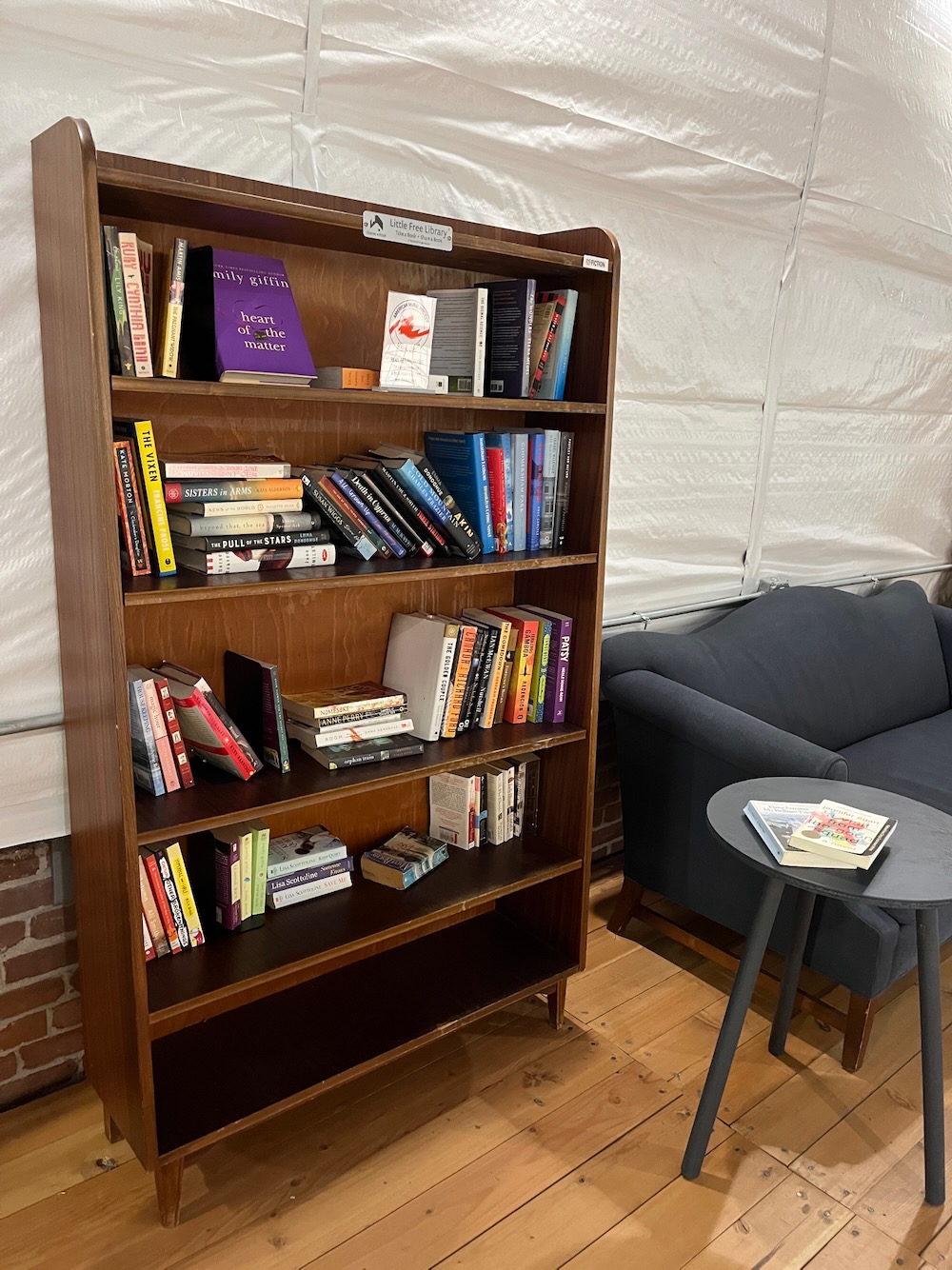
As I was gathering my son to leave, the guy from the front desk asked us if we’d like to create some art to take home with us. His name was Sky and he was politely persistent. I relented and said, “yeah man, let’s do it.” Damian didn’t budge of course, but Sky and I moved to the painting table and set to work.
It was explained that I could choose some paint that contained high amounts of alcohol. Drip some drips on some ceramic and we’d light it on fire to “set” the paint in place. Fire! Cool.
So that’s what we did. I went through two rounds of dripping and burning and rather like the end result.
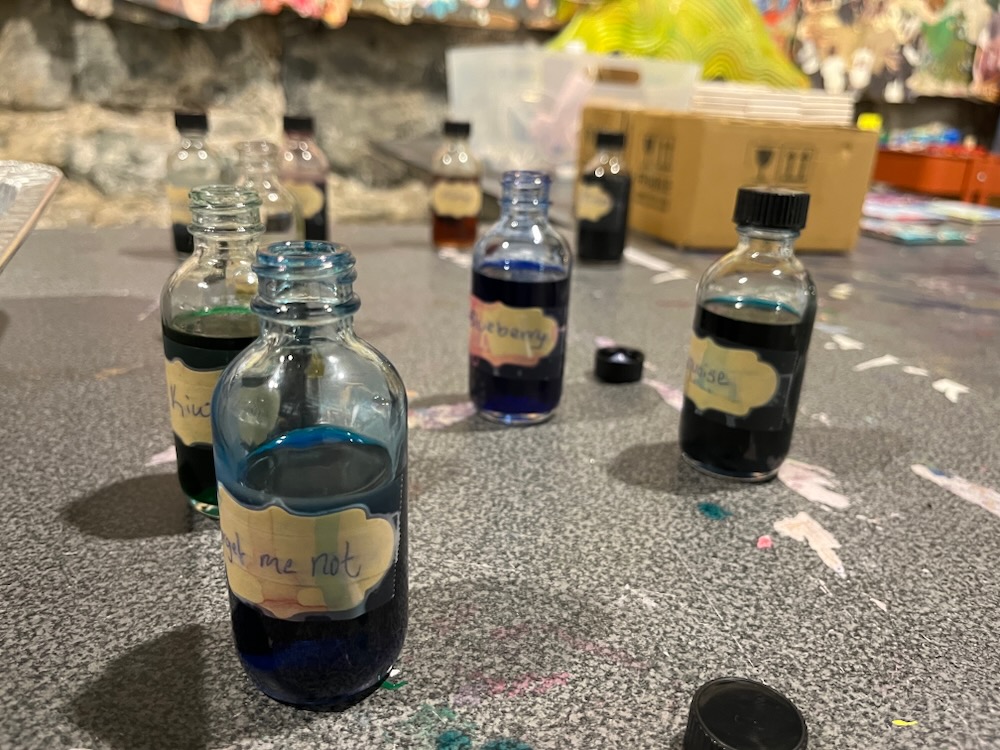
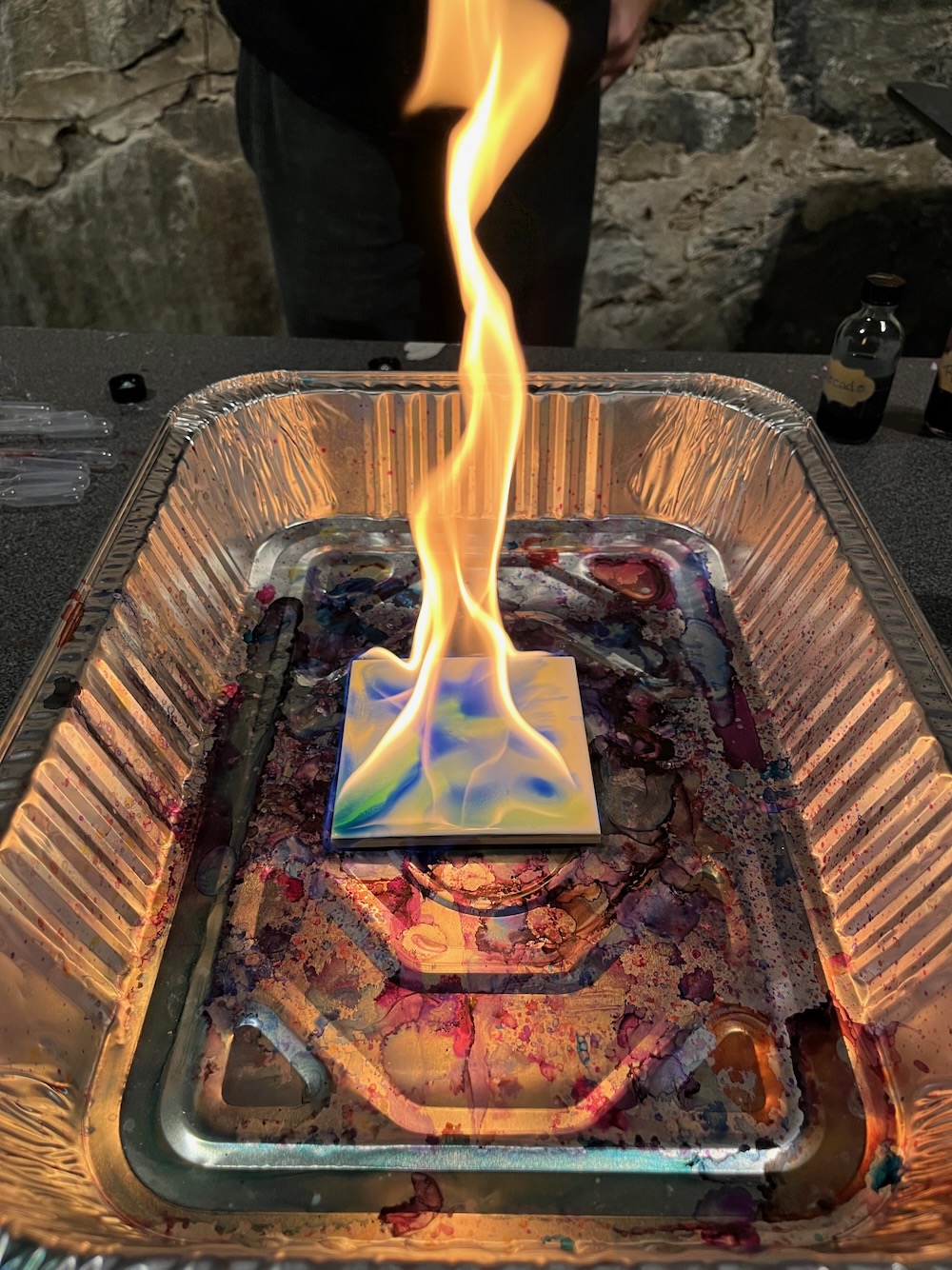
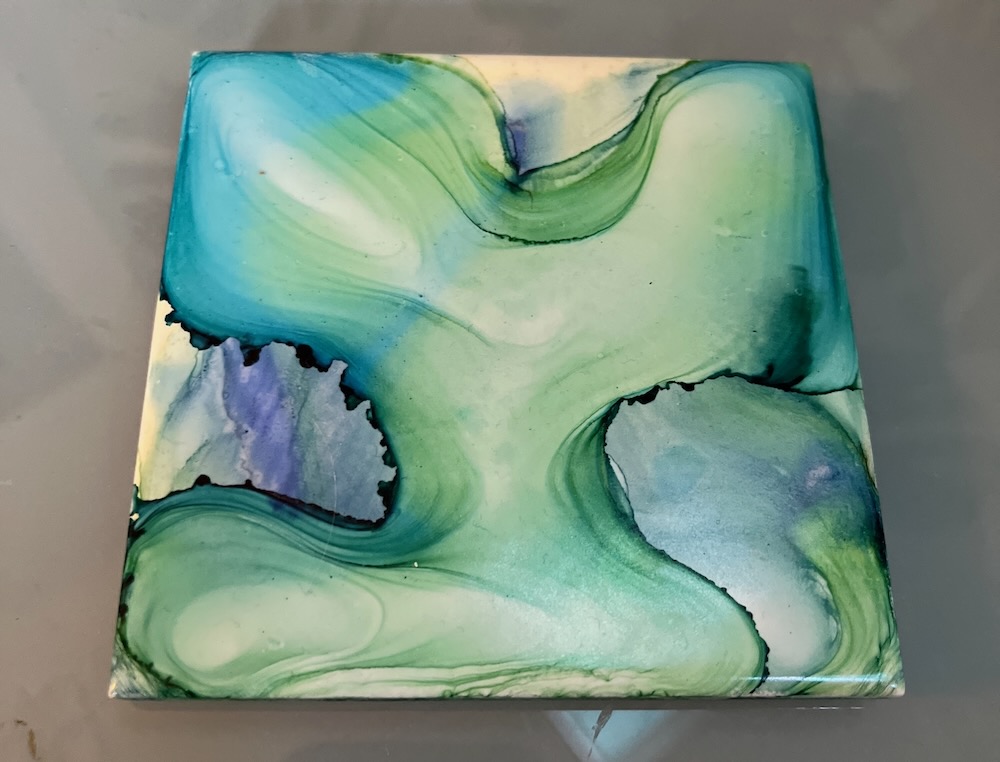
I like everything about AMP. I like its scope and its mission and its ambition. I like its location and I like the fun little add-ons visitors can experience.
I suppose I understand why it costs twelve bucks a pop for adults, but I do struggle to see how that’s sustainable going forward. What would compel someone to revisit? AMP offers yearly passes, but… why? The exhibit doesn’t change. (Okay, they will be unveiling another mural behind the big mural in 2025 I guess, but my point remains.)
I do encourage you to check it out. They have some free Saturdays once in a while and lots of interesting programming throughout the year. Just remember a couple books to donate to the Little Free Library and always accept the little art class. Get AMPed.
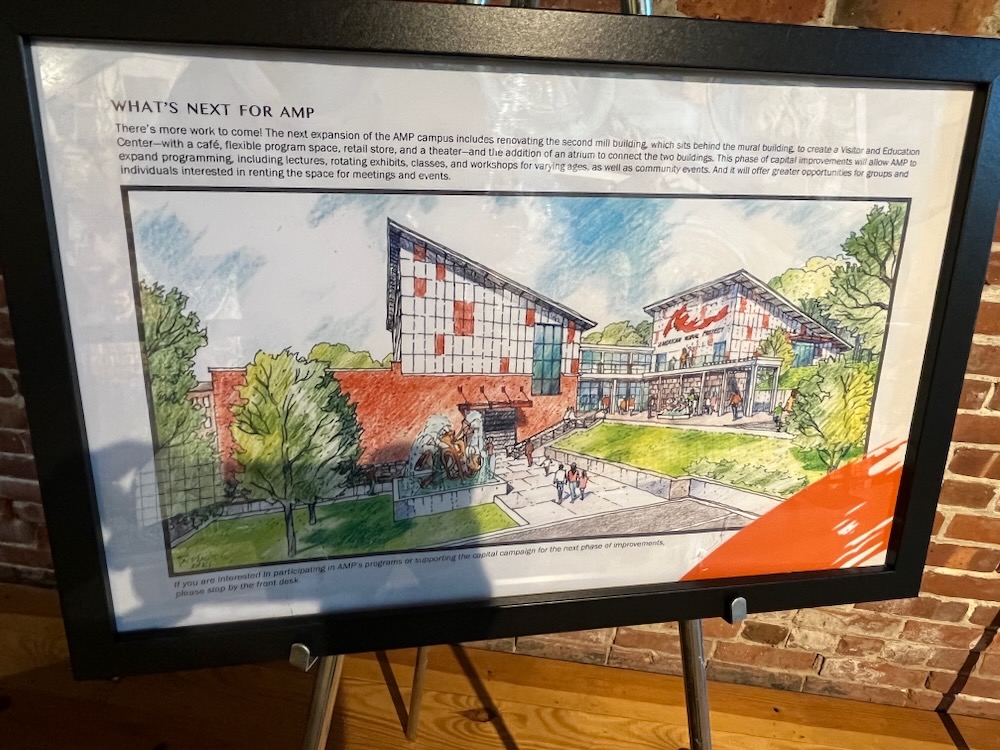
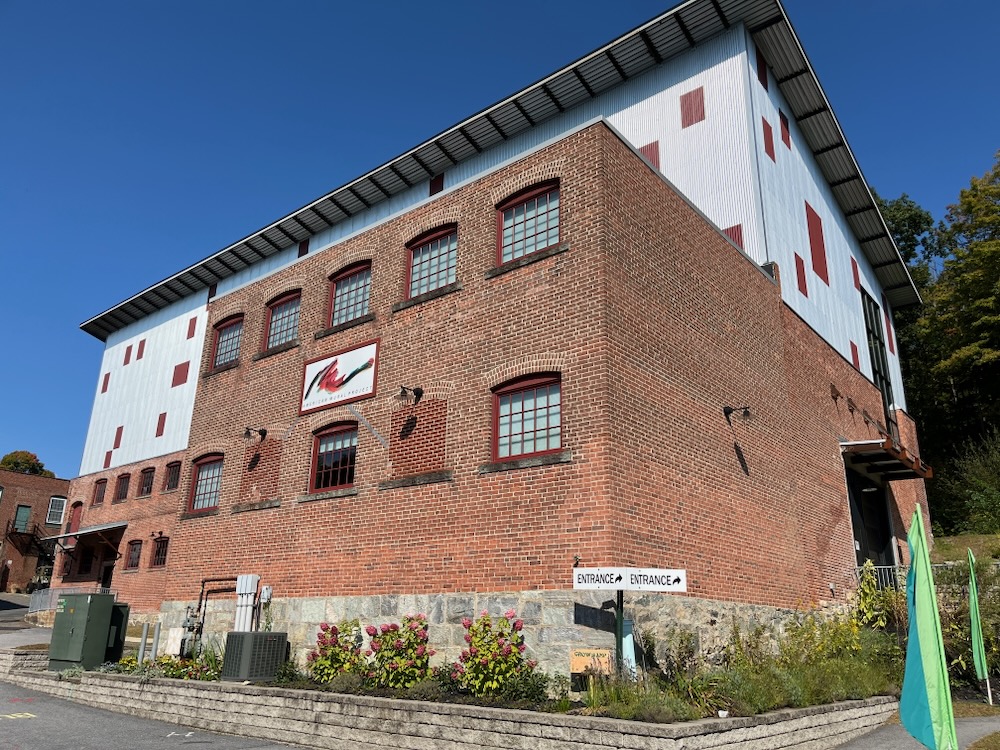
![]()
American Mural Project
CTMQ’s Museum Visits

 Sarah Langdon says
Sarah Langdon says
April 26, 2025 at 9:50 pmWe went to AMP today and loved it. Sky didn’t suggest doing our own art, though. Bummer. Looks like they have some upcoming musical events and summer camp looks cool!